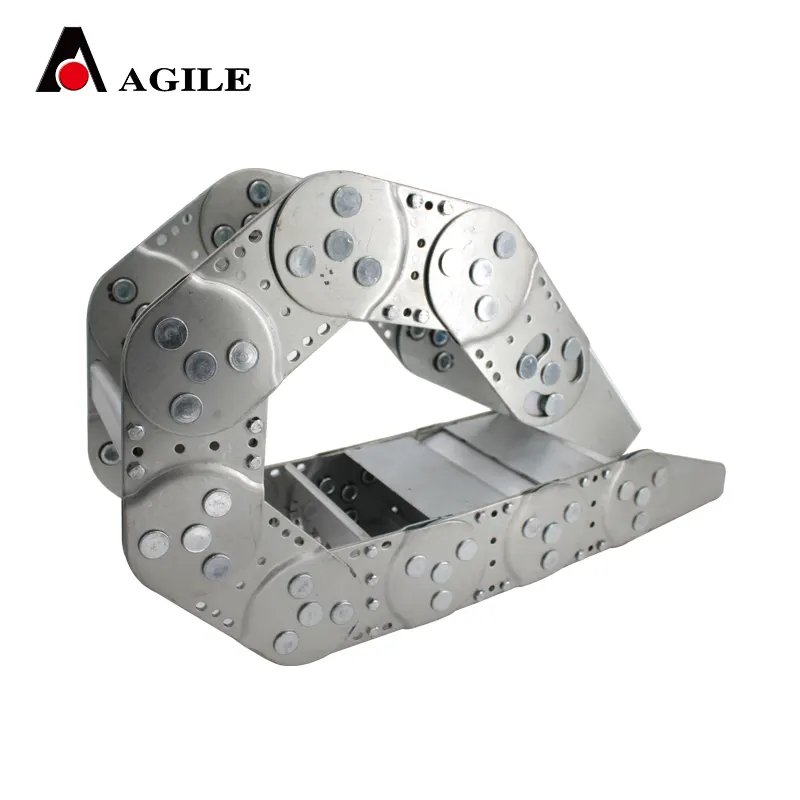flexible cable carrier
In the world of industrial automation and equipment management, plastic cable carriers have increasingly become the go-to solution for protecting and guiding cables and hoses. Their lightweight yet durable construction helps prevent cable tangling and damage, making them indispensable in environments where reliability and durability are paramount.
In the context of real-world application, plastic cable carriers have proven their effectiveness in simplifying maintenance tasks. With their modular design, they allow for easy installation and modification, eliminating the need for complex assembly tools. Technicians can quickly replace individual sections without disrupting the entire system, resulting in minimized maintenance downtime. Plastic cable carriers also earn praise for their contribution to workplace safety. By neatly organizing cables, they reduce tripping hazards and streamline equipment operations. Their installation can significantly diminish workplace accidents, leading to a safer and more productive work environment. Additionally, because they don't rust or corrode, plastic cable carriers maintain their integrity over time, eliminating potential risks associated with metal corrosion. One notable case study demonstrating the benefits of plastic cable carriers comes from the automotive manufacturing industry. Companies manufacturing vehicles often use robotic arms that require precise and reliable cable management solutions. By integrating plastic cable carriers, these companies have achieved reduced mechanical failures and increased production throughput. This transition has not only substantiated cost savings by decreasing the need for repairs but also contributed to more consistent product quality. Plastic cable carriers also emerge as environmentally friendly options in the move towards sustainability. Their extended lifespan reduces the frequency of replacements, and the recyclable nature of many polymers used aligns with zero-waste initiatives. Companies looking to improve their sustainability credentials are increasingly turning to solutions like these to decrease their environmental impact while maintaining operational efficiency. In conclusion, plastic cable carriers represent a potent blend of innovative engineering and practical functionality. Their adaptability to various industrial needs, combined with their durability and ease of maintenance, make them an authoritative choice for enterprises aiming to enhance their operational reliability. By integrating plastic cable carriers, companies can expect not only immediate operational improvements but also long-term gains in safety measures, cost-effectiveness, and environmental responsibility. As industries continue to modernize and become more efficient, the role of plastic cable carriers in ensuring smooth, unhindered cable management cannot be overstated.


In the context of real-world application, plastic cable carriers have proven their effectiveness in simplifying maintenance tasks. With their modular design, they allow for easy installation and modification, eliminating the need for complex assembly tools. Technicians can quickly replace individual sections without disrupting the entire system, resulting in minimized maintenance downtime. Plastic cable carriers also earn praise for their contribution to workplace safety. By neatly organizing cables, they reduce tripping hazards and streamline equipment operations. Their installation can significantly diminish workplace accidents, leading to a safer and more productive work environment. Additionally, because they don't rust or corrode, plastic cable carriers maintain their integrity over time, eliminating potential risks associated with metal corrosion. One notable case study demonstrating the benefits of plastic cable carriers comes from the automotive manufacturing industry. Companies manufacturing vehicles often use robotic arms that require precise and reliable cable management solutions. By integrating plastic cable carriers, these companies have achieved reduced mechanical failures and increased production throughput. This transition has not only substantiated cost savings by decreasing the need for repairs but also contributed to more consistent product quality. Plastic cable carriers also emerge as environmentally friendly options in the move towards sustainability. Their extended lifespan reduces the frequency of replacements, and the recyclable nature of many polymers used aligns with zero-waste initiatives. Companies looking to improve their sustainability credentials are increasingly turning to solutions like these to decrease their environmental impact while maintaining operational efficiency. In conclusion, plastic cable carriers represent a potent blend of innovative engineering and practical functionality. Their adaptability to various industrial needs, combined with their durability and ease of maintenance, make them an authoritative choice for enterprises aiming to enhance their operational reliability. By integrating plastic cable carriers, companies can expect not only immediate operational improvements but also long-term gains in safety measures, cost-effectiveness, and environmental responsibility. As industries continue to modernize and become more efficient, the role of plastic cable carriers in ensuring smooth, unhindered cable management cannot be overstated.








